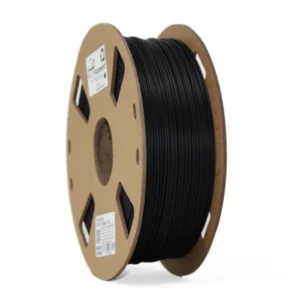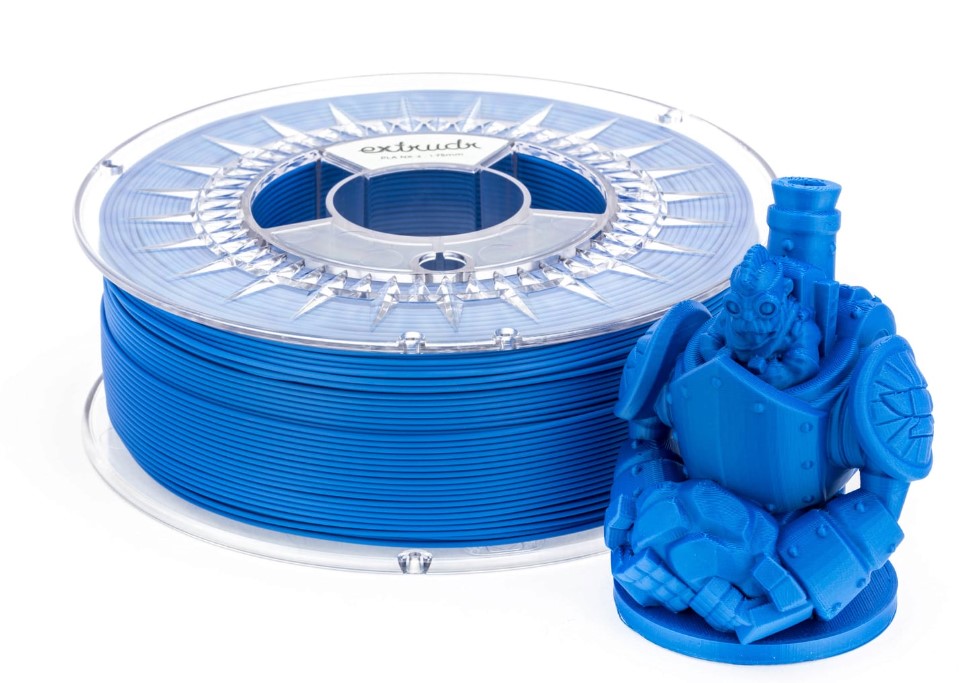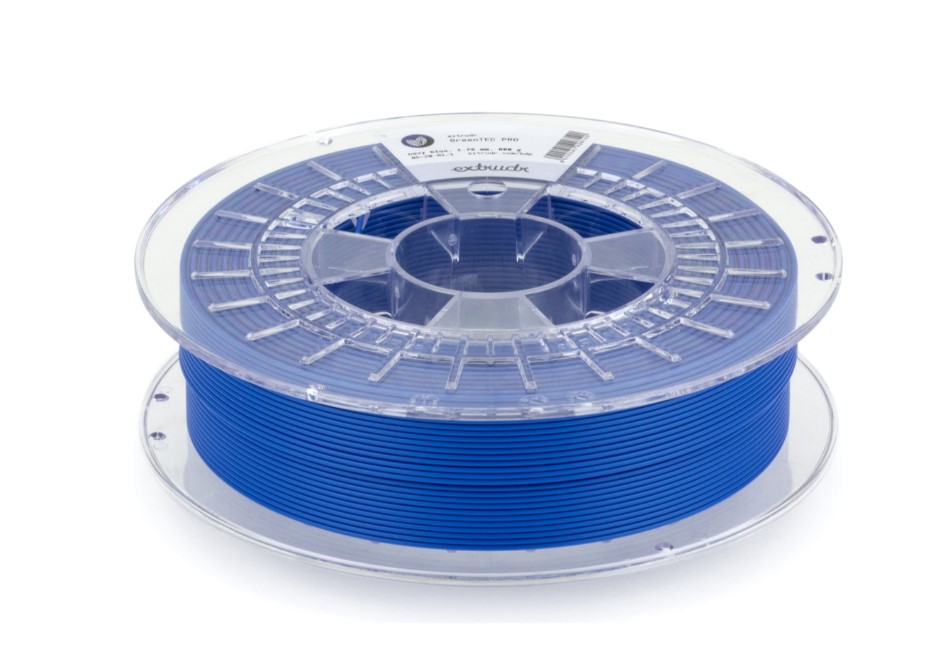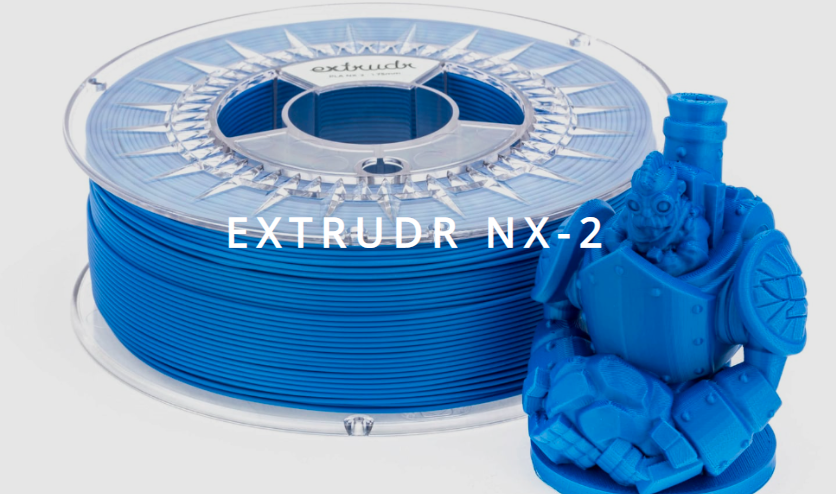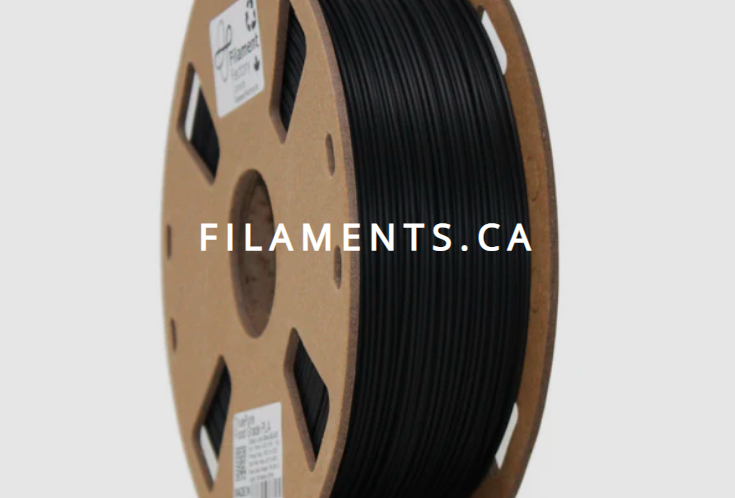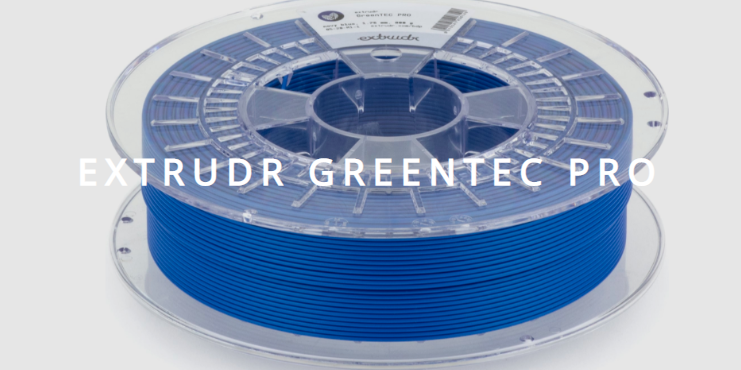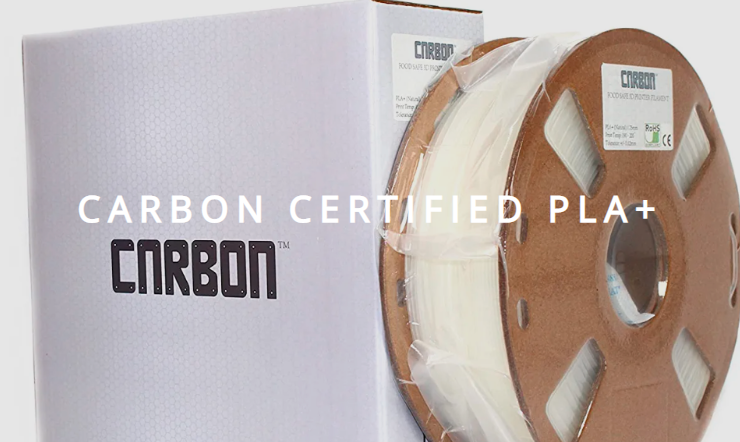- Last Updated: January 12, 2024
-
 Jackson O'Connell
Jackson O'Connell
 Ever wanted to 3D print something for food, like a candy dish or fruit bowl? Well, if you do, you should consider getting a food-safe filament.
Ever wanted to 3D print something for food, like a candy dish or fruit bowl? Well, if you do, you should consider getting a food-safe filament.
Regular 3D printed parts might not seem dangerous, but most filaments aren’t officially food-safe. Moreover, parts printed in these plastics might contaminate any food or liquid that touches the 3D model.
Although you won’t be coughing up blood if you eat an apple that touches a normal 3D print, you might accidentally be consuming microplastics, dust, or other contaminants.
To prevent this from happening, it’s advised that you use a food-safe, FDA-approved 3D printing filament when making 3D models that will contact food (or liquids). And, if you’re printing with PLA filament, then you have a handful of options for food-safe PLA filament.
Perhaps the best food-safe PLA filament is Extrudr NX-2, as it comes in a handful of different colors, prints very well, and doesn’t cost too much. Filaments.ca also sells some amazing food-safe PLA filament that prints like a charm and is very budget friendly.
For more of the best food-safe PLA filaments, just keep reading!
Best Food-Safe PLA Filament At A Glance
1. Extrudr NX-2 (Best Choice)
2. Filaments.Ca (Best Value)
3. Extrudr GreenTec Pro (Premium Choice)
4. Carbon Certified PLA+
First up, Extrudr NX-2 is easily one of the best food-safe PLA filaments out there. Developed by Extrudr, a European filament manufacturer, NX-2 has official approval from the FDA, so you can trust that the parts you print in the filament are safe for food contact.
But NX-2 filament has more than just food safety; the filament also boasts some surprising mechanical properties, such as a high tensile strength. Moreover, according to tests done by Extrudr, parts printed in NX-2 filament had a tensile strength of about 47 MPa. This is much stronger than the tensile strength of a typical PLA filament, which is about 37 MPa.
The high strength of Extrudr NX-2 filament likely comes from its higher-than-normal printing temperature of 200-230 °C. This range is way above that for typical PLA filament and makes the layer-to-layer bonds on prints much stronger.
Despite the relatively high printing temperatures for Extrudr NX-2, though, achieving high-quality prints with this filament should still be pretty easy as it’s still based on PLA.
Additionally, Extrudr NX-2 filament has improved UV resistance over regular PLA filament. This means that you can leave parts printed in NX-2 filament out in the sun for longer before they start to deform. But, in all honesty, while the UV resistance of NX-2 is much better than normal PLA, it’s still not as good as other materials like PETG and ABS.
And one of my favorite parts about this filament is that it comes in a handful of different colors, including black, white, blue, grey, red, orange, green, yellow, and even turquoise. Having some color options always is nice, as printing in only standard dull colors can get boring.
So, if you want to print models that are food-safe, then definitely give Extrudr NX-2 a try. I consider this filament the best food-safe PLA filament as it’s FDA-approved, very strong, UV-resistant, and not too difficult to print!
Filaments.ca is a Canadian manufacturer and seller of 3D printing filaments, with hundreds of different filaments under their belt. The company even makes a food-safe filament known as Filaments.ca TRUE Food Safe PLA. And, despite the rather boring product name, the filament is terrific.
First of all, Filaments.ca’s TRUE food-safe PLA filament is actually FDA-approved (hence the “true” in the name), so food safety is a guarantee! But what I love the most about the filament is its low price. For being one of the only FDA-approved PLA filaments on the market, a sub-$20 price tag for 1 kilogram of filament is a total steal!
The filament also prints like a charm. From personal experience, Filaments.ca food-safe filament prints just like a normal PLA filament, and I was able to achieve high-quality prints with minimal slicer tuning. But don’t take my word for it; just see the many positive user reviews for this filament.
And the filament comes in a plethora of fun colors, like eggshell white, tropical teal, pineapple yellow, water natural (clear), and more!
Overall, Filaments.ca’s TRUE food-safe PLA filament is the perfect option for anyone looking to get the most bang for their buck while keeping food safety in mind. Besides its low price point, though, this filament has a handful of benefits, like many color options, easy printability, and more!
Another food-safe filament option from Extrudr is their GreenTec Pro filament. This filament is FDA-approved, but unlike the other options on this list, GreenTec Pro isn’t exactly PLA. Instead, it’s a special, 100% renewable bio-plastic material, but it prints similarly to PLA, so it’s worth going over.
As I mentioned, Extrudr GreenTec Pro is FDA-approved, so it’s safe to use the filament to print parts that might come into contact with edible substances. Additionally, though, this filament has REACH approval and meets RoHS standards, further reinforcing the fact that this filament won’t harm you.
But what I like most about GreenTec Pro is its mechanical properties. This filament boasts a tensile strength of 58 MPa, which is 10 MPa greater than Extrudr NX-2, and 20 MPa more than regular PLA filament. As such, you’ll be able to print models that require a good bit of strength in GreenTec Pro filament.
According to Extrudr, GreenTec Pro filament is also resistant to temperatures as high as 160 °C. While the UV resistance of this material isn’t mentioned, it should be pretty good, given the heat resistance. As such, feel free to use this material to print outdoor models, like a tent stake.
Also, GreenTec Pro prints very similarly to PETG, which would make sense given some of its mechanical properties. Moreover, the manufacturer recommends using a nozzle temperature of 210-230 °C and a bed temperature of 20-90 °C. Plus, the company notes that warping and other issues are uncommon, so your printing experience should be very smooth.
So, if you have a little extra dough to spend on this filament, then give Extrudr GreenTec Pro a shot. It’s of course, FDA-approved, made completely from renewable resources, and prints made in the filament are super durable and strong. What’s not to love?
Lastly, Carbon Certified PLA+ is another food-safe filament. While it’s not made by a big 3D printing company, this filament has the so-hard-to-get FDA approval, so prints made in this material should be food-safe.
Additionally, Carbon Certified PLA+ has approval from other food-safety organizations, like TÜV SÜD and SGS. Of course, the company could be lying to you as no official FDA approval documents were provided. But, personally, I believe the claims because the product description references many specific codes from FDA guidelines.
As for the other aspects of the filament, the manufacturer states that the PLA+ filament has a diameter tolerance of just +/- 0.02 mm. This is much lower than the typical tolerance of +/- 0.05 mm and indicates that this filament shouldn’t cause any extrusion issues on your printer.
The company also provided some strength measurements, including a tensile strength of 35 MPa. This is about the same as that of a typical PLA filament, which is a little concerning as this filament is called “PLA+”.
But nevertheless, the filament is still a solid option if you’re looking for one with FDA approval.
What is Food Safe Filament?
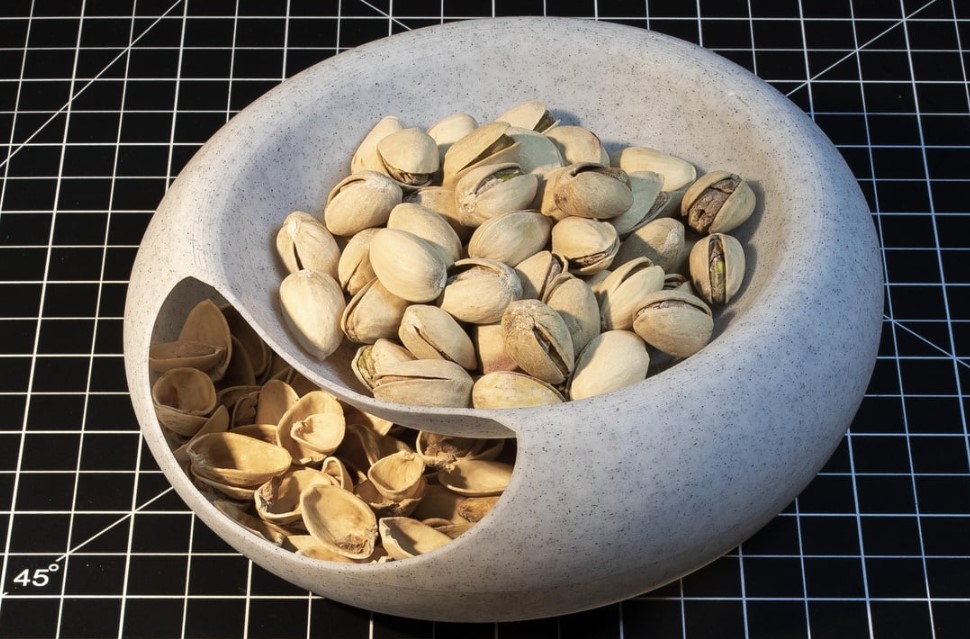
Food safe filament is a classification of filament that’s safe for printing food-contact models. In other words, food-safe filament is plastic that won’t contaminate items that touch it.
While many filament manufacturers state that their filaments are food-safe, these claims are usually unsubstantiated. To tell if a filament is truly food safe, you should look for FDA approval.
FDA approval means that the U.S. Food and Drug Administration has intensively tested the plastic and made sure that it won’t harm you, even if food touches prints made from the filament. Very few filaments have FDA approval because of how strict the guidelines for this form of approval are.
So, if you’re looking for a food-safe PLA filament, then make sure the product has FDA approval!
Can You Use Non-FDA Filaments?
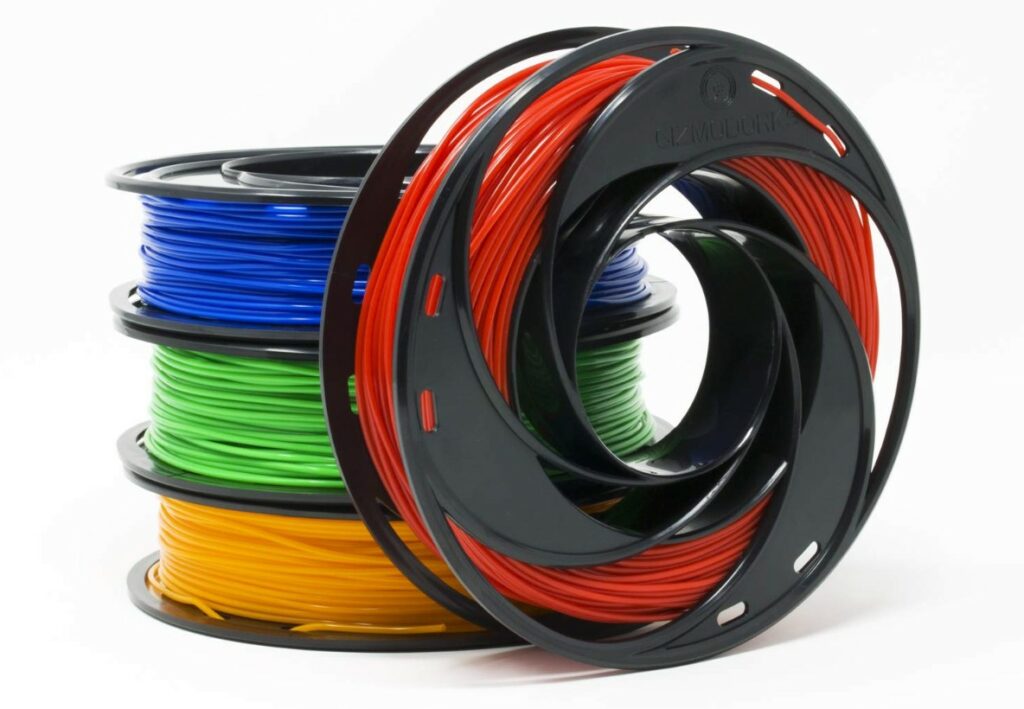
Yes, but be careful!
Approval from the U.S. Food and Drug Administration is very hard to get for a 3D printable plastic material. Many filament manufacturers may attempt to gain FDA approval for one of their filaments, but few succeed.
However, just because a filament doesn’t have FDA approval doesn’t mean it’s not food safe. For example, if a popular and reputable filament manufacturer, such as Hatchbox, makes a filament and states that it’s food-safe, then it probably is. However, because there’s no official approval from the FDA, you can’t be 100% sure.
But, in general, if you trust a filament manufacturer and they say their filament is food-safe, it’s probably food-safe enough for printing items like a fruit bowl or candy dish.
Also, it’s worth noting that FDA approval isn’t the only form of official approval for a product’s food safety, and other trustworthy agencies, such as the European Medicines Agency (EMA), can also issue food safety approvals.
Is ABS Food Safe?
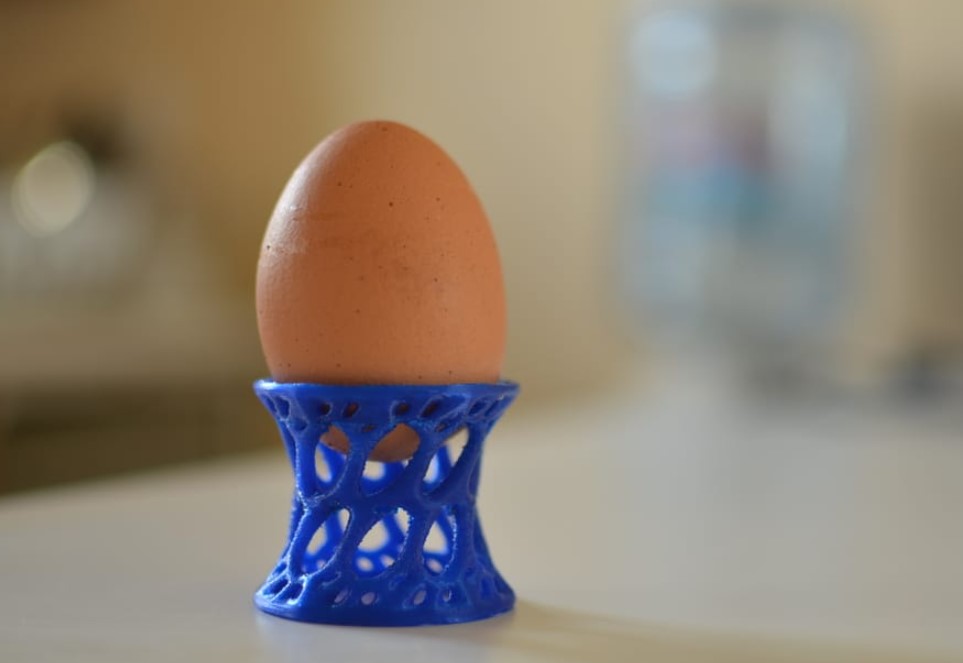
No!
ABS is notoriously not food safe. While most PLA filaments aren’t food-safe, basically ALL filaments aren’t food-safe.
The main reason for this is because ABS plastic comes from oil, which is…you guessed it…not food safe. On the other hand, PLA is derived from corn and sugar, which is why some PLA filaments can be food-safe.
So, if you have to print a model that will touch food or drinks, then I strongly advise you not to print it in an ABS filament and instead use a food-safe PLA filament.
Uses of Food Safe PLA Filament
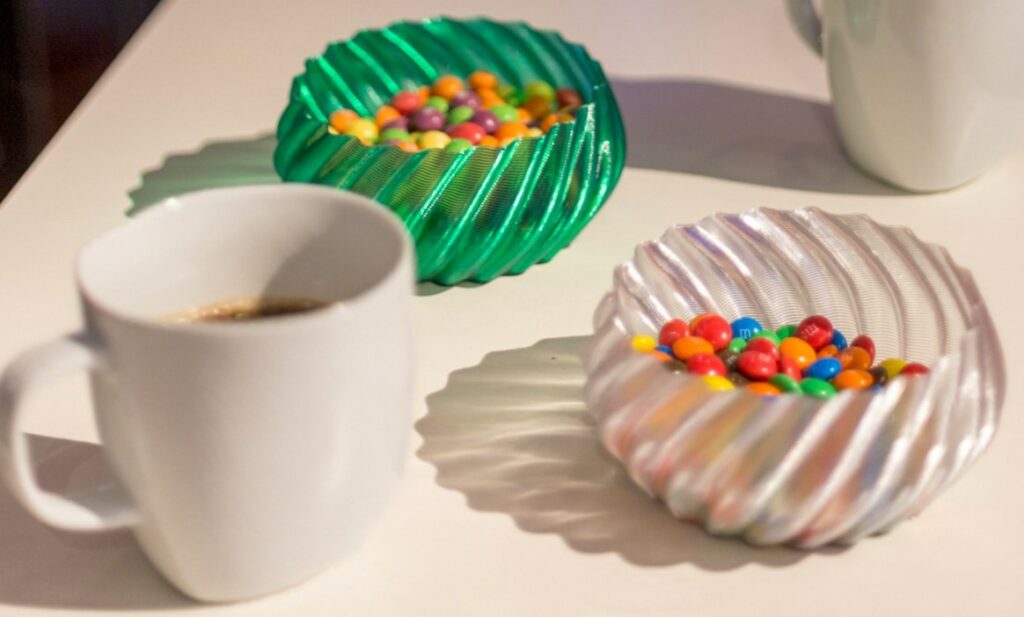
The main use for food-safe PLA filament is for printing 3D models that will contact food or drinks. These models might include a fruit bowl, candy dish, drink mug, or something else that touches something edible.
True food-safe filaments, which have FDA approval, aren’t made by accident. They have been specifically crafted to meet FDA-approval standards, so their main purpose is to make food-contact models and ensure that any food or drink placed on these 3D prints won’t harm you.
However, food-safe filament can be used to print pretty much anything you would normally print in PLA filament. For example, you could use food-safe PLA filament to print items like a phone stand, bag clip, or wristband.
Other Ways to Make Food Safe Parts
Using a food-safe PLA filament isn’t the only way to make your 3D prints food-safe, though. In the sections below, I’ve gone over a handful of other techniques you can employ to ensure that your 3D prints are food-safe.
Use a Different Material
First, you can use a different material. PLA isn’t the only 3D printable plastic material that can be food safe. In fact, there are a handful of filaments in other materials that also have FDA approval.
As we went over, some materials naturally won’t ever be food-safe, such as ABS. However, you can definitely find food-safe PETG, PP, TPU, and nylon filaments, which you can use to make food-safe 3D prints.
Use a Stainless Steel Nozzle
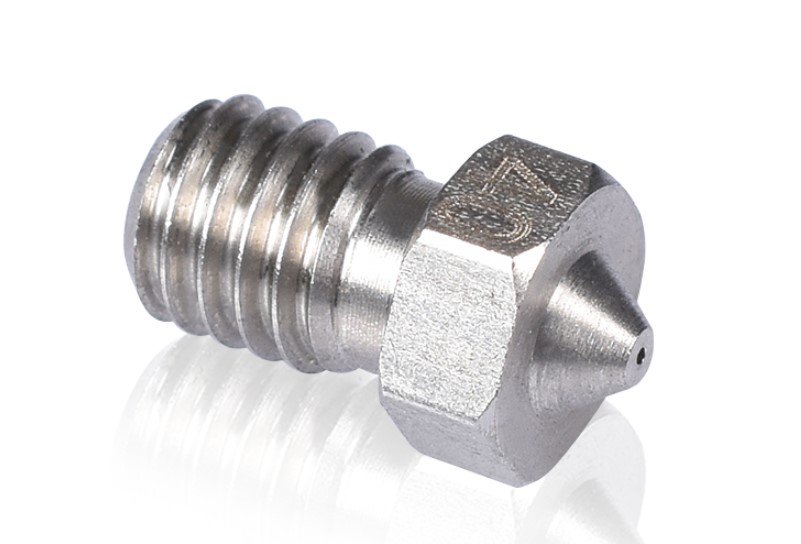
One of the ways contaminants get into 3D prints is through the nozzle. Moreover, the typical brass nozzle on a 3D printer (e.g. Creality Ender 3) picks up contaminants, like dust and burnt plastic, over time. And, over time, these contaminants can wipe off onto prints, hurting their food safety.
A stainless steel nozzle won’t let anything stick to its surface. Because of this, it’s a lot less likely that contaminants will get on your 3D prints, making them more food-safe. So, if you’re printing a model that you want to be food-safe, consider using a stainless steel nozzle.
Plus, stainless steel nozzles are pretty inexpensive. For example, you can buy this set of 7 stainless steel 3D printing nozzles for under $15.
Learn more about the differences between brass vs stainless steel vs hardened steel nozzles here. And make sure to check out our article on the best 3D printer nozzles here.
Apply a Food-Safe Coating
Another way you can ensure that a 3D print is food-safe is by using a food-safe coating. 3D prints are naturally very porous, which allows contaminants, like dust and bacteria, to get into the small crevices in a model. Covering a 3D print with a food-safe coating will ensure that no contaminants get into the model.
There are a handful of food-safe finishes you can use, including Shellac by Rust-Oleum, silicone, epoxy resin, and polyurethane.
Properly Clean Hot End
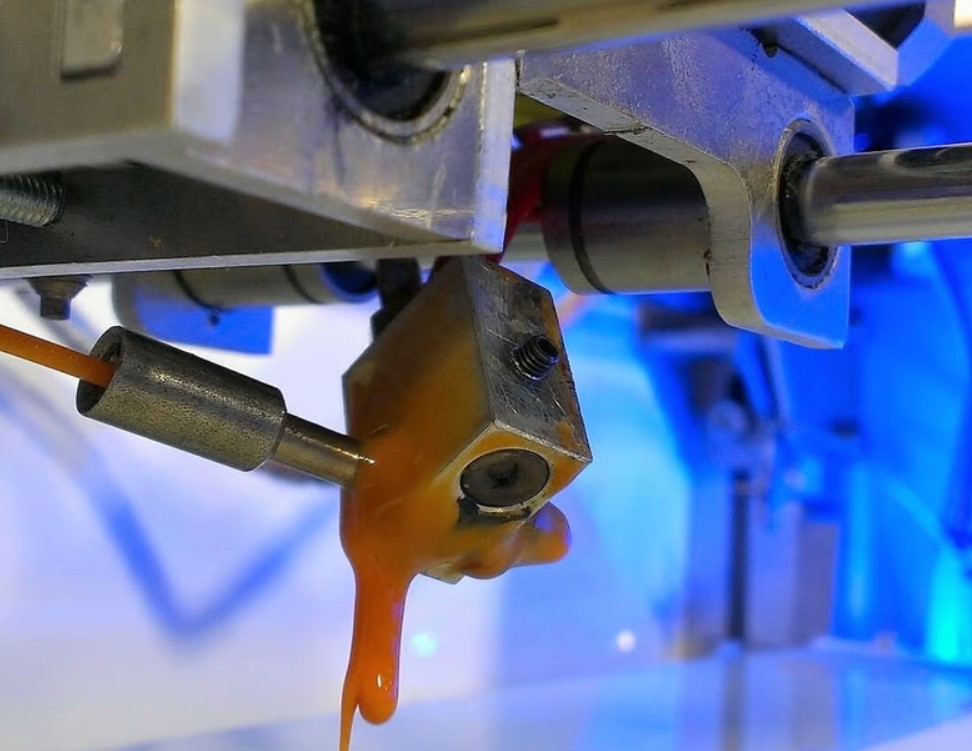
Properly cleaning the hot end is another way you can ensure a 3D print is food-safe. Over time and after a lot of printing, a lot of contaminants can get into the hot end. Cleaning it will make sure that these contaminants are gone so that your food-safe PLA filament stays clean during the printing process.
You can clean your hot end and rid it of any contaminants or leftover filament by heating it up to above your normal printing temperatures and using a metal pick to clean it out.
Conclusion
If you’re 3D printing a model that will touch food, it’s important to keep food safety in mind. If you’re not using a food-safe filament, then you’re putting your body at risk.
Of course, a normal 3D print, made with non-food-safe filament, won’t give you a disease. But, it’s definitely not good for your body because any food items that contact the print’s surface might pick up microplastics or other contaminants.
That’s why I, along with the Food and Drug Administration, strongly advise you to use a food-safe filament to print models that will touch food or liquids.
Because of how strict the FDA is, there aren’t many FDA-approved, food-safe PLA filaments. But, of the ones that do exist, easily the best option is Extrudr NX-2. This filament comes in many different colors, so your prints will look amazing; plus, it’s decently easy to print and also somewhat strong.
But, if you’re shopping on a budget, maybe the food-safe filament from Filaments.ca is more your speed. It’s a great bang for your buck and prints just like a typical spool of PLA filament.
Lastly, if you want the highest-quality prints, consider getting some Extrudr GreenTec Pro filament. This filament prints like a charm, and parts made in the material have many awesome mechanical properties.
Related Articles:





